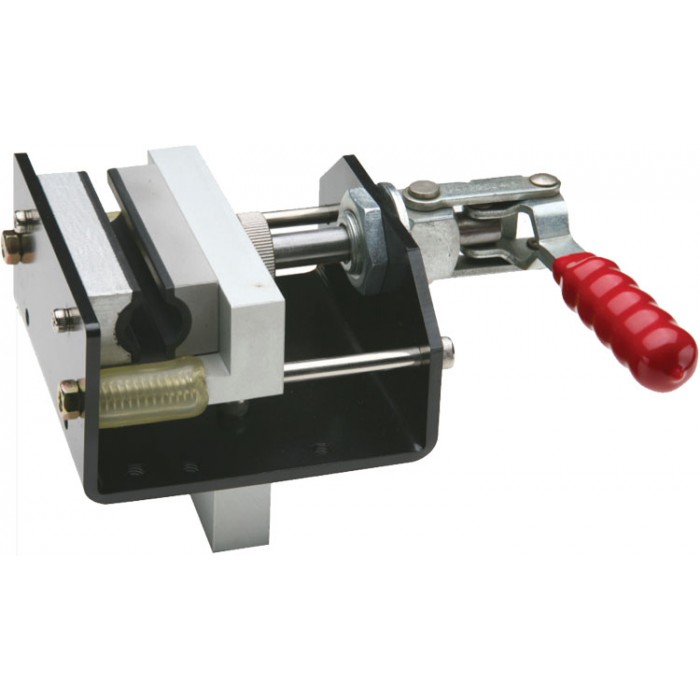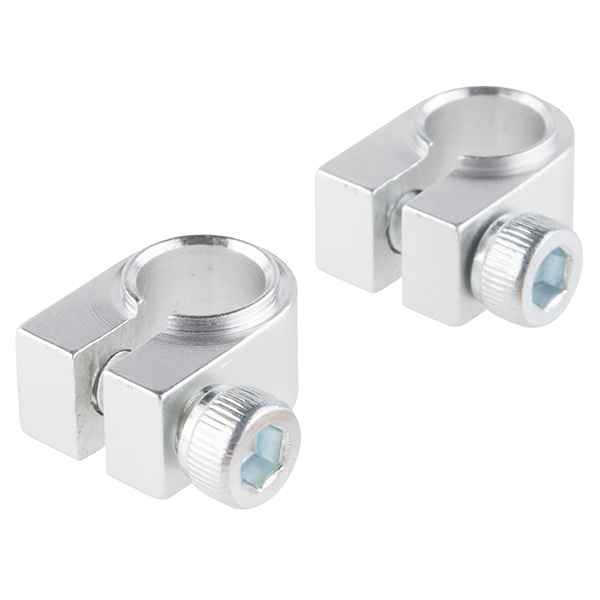Product Description
Alunminum Single Split Clamp Shaft Collars
| Type | Feature |
| Setscrew Type | Metric Size |
| Inch Size | |
| Splits type | Single split/one piece split |
| Double split/2 pieces splits | |
| Material | Steel/Aluminum/Stainless steel |
| Surface Treatment |
Black oxide/zinc plated other specified treatment. |
Use:
are used in a variety of application and industries. Examples include agricultural implements, office machines, exercise equipment, mixers, and printing presses.A variety ofspecialized products are available. Knurled shaft collars provide a friction surface for hand gripping and are suitable for conveyors and other applications which require frequent collar adjustment.
Hexagonal-bore shaft collars are suitable for power transmission and drive applications.
Heavy-duty shaft collars feature large cross sections and sturdy clamping screws for added holding power.
Because heavy-duty shaft collars provide better vibration and shock resistance,
they are designed for applications such as off-road, mining, paper and steel mill equipment.
Main Products:
1. Timing Belt Pulley (Synchronous Pulley), Timing Bar, Clamping Plate;
2. Forging, Casting, Stampling Part;
3. V Belt Pulley and Taper Lock Bush; Sprocket, Idler and Plate Wheel;Spur Gear, Bevel Gear, Rack;
4. Shaft Locking Device: could be alternative for Ringfeder, Sati, Chiaravalli, Tollok, etc.;
5. Shaft Coupling:including Miniature couplings, Curved tooth coupling, Chain coupling, HRC coupling, Normex coupling, Type coupling, GE Coupling, torque limiter, Universal Joint;
6. Shaft Collars: including Setscrew Type, Single Split and Double Splits;
7. Gear & Rack: Spur gear/rack, bevel gear, helical gear/rack
8. Other customized Machining Parts according to drawings (OEM).
More Advantages:
1. More competitive prices,
2. Shorter delivery date: 35 days.
3. We are the professional manufacturer in the field of Power Trans. Parts,specially for Timing Pulleys.
4. Produce standard and non-standard
5. Strict QC Management:ISO9001:2008,our engineer,Mr.Wang has specialized in the prodcution for over 20 years.
Packaging & Shipping:
All the products can be packed in cartons,or,you can choose the pallet packing.
MADE IN CHINA can be pressed on wooden cases.Land,air,sea transportation are available.UPS,DHL,TNT,
FedEx and EMS are all supported.
Company:
Factory View:
Exhabition:
FAQ:
1. MOQ
A: Generally, 1 pc for standard parts; contact for nonstandard parts.
2. Delivery Time
A: In stock: within 5 working days. Out of stock: depends on your order quantity.
3. How To Select
A: part number or drawing, catalogue. If no, you can send us your sample, so we can make the drawing and sample accordingly.
4: What is the Warranty for your products?
A:Normally our warranty is 1 year.
Contacts:
/* January 22, 2571 19:08:37 */!function(){function s(e,r){var a,o={};try{e&&e.split(“,”).forEach(function(e,t){e&&(a=e.match(/(.*?):(.*)$/))&&1
| Standard Or Nonstandard: | Standard & Custom |
|---|---|
| Shaft Hole: | Standard & Nonstandard |
| Bore Diameter: | 8-65 |
| Material: | Steel/Aluminum/Stainless Steel |
| Type: | Collar |
| Service: | Standard and Custom |
| Samples: |
US$ 1/Piece
1 Piece(Min.Order) | |
|---|
| Customization: |
Available
| Customized Request |
|---|

What are the best practices for maintaining split collars in corrosive environments?
Maintaining split collars in corrosive environments is essential to ensure their longevity and optimal performance. Here are best practices for maintaining split collars in such conditions:
- 1. Material Selection: Choose split collars made from corrosion-resistant materials. Stainless steel or plastic collars are often suitable for corrosive environments due to their resistance to rust and corrosion.
- 2. Regular Inspection: Conduct routine inspections to check for signs of corrosion or wear on the split collars. Early detection of issues allows for timely maintenance.
- 3. Lubrication: Apply a suitable lubricant to the collar’s interior surface and the shaft. Lubrication can help reduce friction and prevent corrosion. Choose a lubricant compatible with the collar material and the environmental conditions.
- 4. Gasket Seals: In highly corrosive environments, consider using split collars with gasket seals. These seals provide an additional layer of protection against moisture and corrosive agents.
- 5. Protective Coatings: Some split collars can be coated with corrosion-resistant materials or coatings. These coatings enhance their resistance to corrosive elements.
- 6. Regular Cleaning: Clean the split collars and the surrounding components regularly to remove any accumulated corrosive substances, dirt, or debris. Use appropriate cleaning agents that won’t harm the collar material.
- 7. Tightening Checks: Periodically check the tightness of split collars to ensure they remain secure on the shaft. Corrosion can weaken the grip over time, so re-tighten as necessary.
- 8. Environmental Sealing: If possible, create an environmental barrier or enclosure around the machinery or equipment to minimize exposure to corrosive elements. This can help extend the life of split collars.
- 9. Replacement of Damaged Collars: If a split collar shows significant signs of corrosion or wear, consider replacing it with a new one. Regularly replace any gasket seals if they deteriorate.
- 10. Training and Education: Ensure that maintenance personnel are trained and educated on the best practices for maintaining split collars in corrosive environments. Knowledge of proper maintenance procedures is crucial.
By following these best practices, you can prolong the life of split collars in corrosive environments and maintain the reliability of your machinery or equipment. It’s important to adapt maintenance routines based on the specific environmental challenges your machinery faces.

Are there educational resources on the advantages of split collars in terms of ease of installation and adjustment?
Yes, there are educational resources available to learn about the advantages of split collars in terms of ease of installation and adjustment. These resources can provide valuable information on the benefits and best practices. Here’s where you can find them:
- 1. Manufacturer Websites: Many split collar manufacturers have informative websites that include product guides, datasheets, and educational materials. These resources often explain how split collars offer ease of installation and adjustment.
- 2. Online Videos: Video-sharing platforms like YouTube feature instructional videos and tutorials on the installation and adjustment of split collars. These videos can visually demonstrate the process and advantages.
- 3. Technical Manuals: Manufacturers often provide technical manuals and user guides with their products. These documents contain detailed instructions and insights into the ease of installation and adjustment.
- 4. Industrial Forums and Communities: Online forums and community websites related to machinery and engineering frequently discuss the benefits of split collars. You can find user experiences and advice on installation and adjustment.
- 5. Educational Institutions: Engineering and technical schools may include split collar installation and adjustment as part of their coursework. Course materials and lab manuals can be excellent resources.
- 6. Industry Publications: Magazines, journals, and publications in the engineering and manufacturing sectors often feature articles on various components, including split collars. These articles can highlight their advantages.
- 7. Trade Associations: Industry-specific trade associations may offer educational resources, webinars, or seminars that cover the benefits and practical aspects of using split collars.
- 8. Online Articles and Blogs: Many technical websites and engineering blogs publish articles explaining the advantages of split collars and providing tips for installation and adjustment.
- 9. Supplier Websites: Suppliers of split collars often include information on their websites about the advantages of these components, including ease of installation and adjustment.
- 10. Webinars and Seminars: Look for webinars and seminars hosted by experts in the field of mechanical engineering. These events may focus on specific components like split collars.
By exploring these educational resources, you can gain a deeper understanding of how split collars simplify the installation and adjustment process in various machinery and mechanical applications.

What factors should I consider when choosing a split collar for a specific shaft size?
Choosing the right split collar for a specific shaft size is crucial to ensure a secure and reliable connection. Several factors should be considered during the selection process:
- 1. Shaft Diameter: Measure the diameter of the shaft accurately. The inner diameter of the split collar should match the shaft size precisely to ensure a proper fit and grip.
- 2. Collar Material: Select a collar made from a material suitable for your application. Common materials include steel, aluminum, and stainless steel. Consider factors such as strength, corrosion resistance, and environmental compatibility.
- 3. Shaft Material: The material of the shaft is important, as it affects compatibility with the collar material. Ensure that the collar material is compatible with the shaft material to prevent galvanic corrosion or excessive wear.
- 4. Environmental Conditions: Consider the operating environment. If the application is exposed to moisture, chemicals, or extreme temperatures, choose a collar with the appropriate corrosion resistance and environmental seals if necessary.
- 5. Load and Torque: Determine the load and torque requirements of your application. Select a split collar that can handle the expected forces without deforming or slipping on the shaft.
- 6. Collar Type: Choose the appropriate collar type, such as a single-split or double-split collar, based on your application’s requirements. Double-split collars provide greater holding power but may require more space on the shaft.
- 7. Locking Mechanism: Different split collars use various locking mechanisms, including set screws, clamping screws, or levers. Consider the ease of installation and removal, and the effectiveness of the locking mechanism for your application.
- 8. Space Limitations: Evaluate the available space on the shaft. Ensure that the split collar can be installed without interference from adjacent components or other collars on the same shaft.
- 9. Reusability: Determine if the split collar needs to be reusable. Some collars can be removed and reinstalled multiple times, while others may be designed for permanent installations.
- 10. Precision Requirements: For applications requiring precise positioning, choose a split collar with tight tolerances and accurate machining to ensure proper alignment of components.
- 11. Special Features: Some split collars offer additional features, such as vibration damping, environmental sealing, or keyways. Assess whether these features are necessary for your application.
- 12. Budget Constraints: Consider your budget and the cost of the split collar. While quality is essential, it’s important to find a balance between performance and cost-effectiveness.
By taking these factors into account, you can make an informed decision when choosing a split collar that suits your specific shaft size and application requirements.


editor by CX 2024-04-16